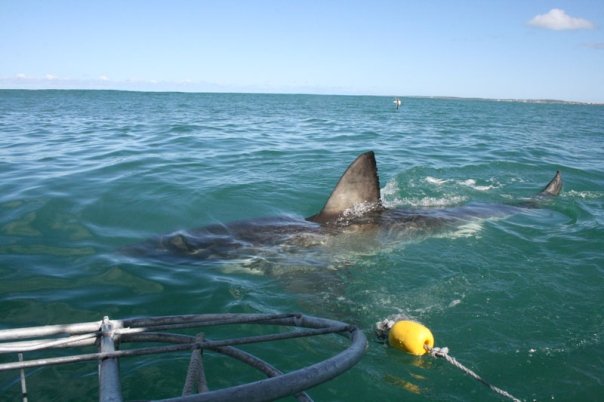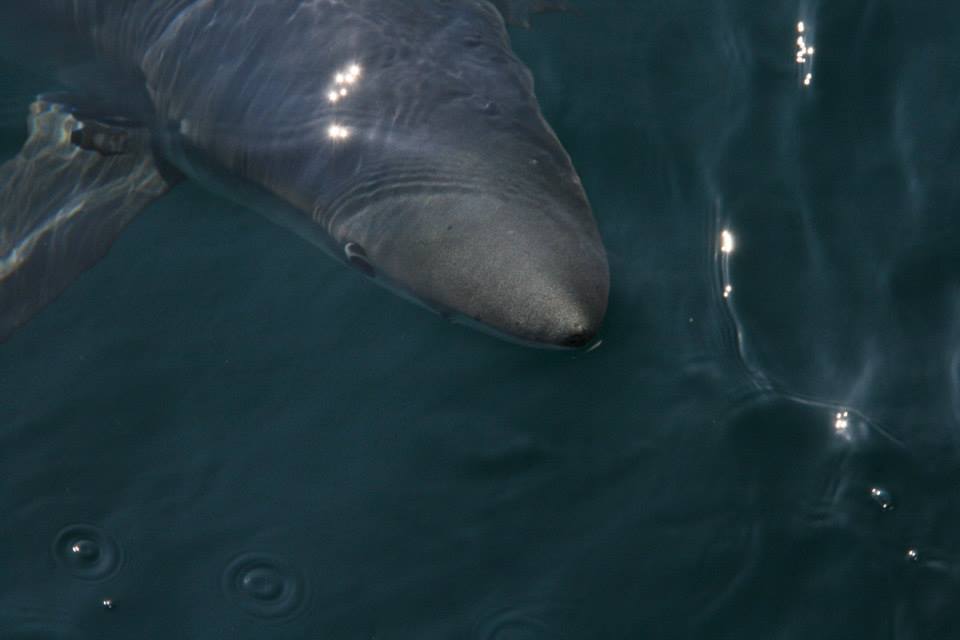For years the word ‘shark’ has been inseparable in the minds of the public from the words ‘shark attack’. When sharks are mentioned, I would not be surprised if the first image in your mind was that of the attacks featured in ‘Jaws’, or the silhouette of a dorsal fin sliding menacingly in the water towards you. Perhaps it’s these films that are responsible for this narrative, given that most people report a moderate fear of sharks despite only experiencing them through media (5.9–6.5 on a 10-point scale) (Le Busque et al., 2021). The frighting reality of this is that there is a concern that fear of sharks may have impacted people’s approval of shark conservation efforts and therefore their funding up to now (Chapman, 2017).
This is devasting news for an extremely misunderstood animal. Sharks provide ecosystem services to a plethora of marine habitats from the deep sea to coral reefs and yet they are in major decline. Species such as hammerhead (Sphyrnidae), whaler (Carcharhinidae), tiger shark (Galeocerdo cuvier) and white sharks (Carcharodon carcharias) have experienced a decline of between 74 to 92% of catch per unit effort in the past 55 years (Roff et al., 2018). These figures along with the simultaneous declines in shark body size and probability of meeting mature adults (Roff et al., 2018) shows us that apex sharks are more vulnerable to exploitation than we previously thought. The question on every conservationist’s mind therefore; how can we reduce these global declines?

For reef dwelling sharks, marine parks appear to be an effective way to conserve these species. For the recreational fishing that is allowed in these areas, elasmobranchs only make up 0.8% of the total catch and most are released in line with ‘best practice’ guidelines (Lynch, Sutton and Simpfendorfer, 2009), however industrial long line fishing threatens deep-water pelagic species such as blue sharks, gulper sharks and dogfishes as these species are often caught as bycatch (Fauconnet et al., 2019). To protect these sharks research has been done on how we can use their electric sense to deter them from these dangerous zones.
Electroreception is a sensory modality that many aquatic species have developed including members of the Chondrichthyes such as sharks and rays (Caputi et al., 2013). These species can sense weak electric fields through specialised receptors called ampullae of Lorenzini. In shark species these are usually found around the head and used to aid capture of prey, despite only detecting prey over short ranges they can aid detection in cases where visibility is poor such as turbulent water (Hart and Collin, 2015). Each ampullar consists of a pore on the surface of the skin that is connected to a chamber (containing receptor cells) deep within the skin via a narrow canal. This canal and chamber are filled with a conductive hydrogel that provides an electrical connection with the external pore and receptors (Hart and Collin, 2015) so charged ions can pass through the canal and be detected. These sensory organs are extremely sensitive and allow sharks to detect minute electromagnetic fields <1 nVcm–1 (Huveneers et al., 2013), however this sensitivity to electrical changes also means it’s possible for this sense to become overloaded and the shark to show avoidance behaviour. This was first observed in 1935 when blindfolded small-spotted catsharks would react to the presence of a rusty steel wire when brought in close contact with the head and re-orientate themselves (Kempster et al., 2016).

Developments in this field over the last 10 years have sought to take advantage of this behavioural response in the development of shark deterrent devices to protect both humans and sharks. Recent work with a device called ‘SharkGuard’ has examined whether the device could be used to mitigate bycatch of oceanic sharks that are often caught, such as the blue shark. The Device was designed for species usually encountered in longline fisheries, it creates a powerful, short-range, 3D pulsed electric field to overstimulate a sharks’ electroreceptors and reduce frequency of hook interaction (Doherty et al., 2022). During a trial, hooks fitted with SharkGuard significantly reduced catch rates of blue sharks and pelagic stingrays, decreasing standardised catch per unit effort by an average of 91.3% and 71.3% respectively, compared to hooks without (Doherty et al., 2022). Furthermore, studies with another type of electric shark deterrent, “Shark Shield Freedom7” showed that Carcharodon carcharias avoided bait when this device was operating, although they did show some level of tolerance to it over time (Kempster et al., 2016).
These findings prove the concept of a non-lethal sensory based shark deterrent and demonstrate that it can work in practice. They have the potential to meaningfully reduce the number of sharks caught in longline fisheries protecting these species from a major threat, as well as reducing the likelihood of a shark attack which negatively impacts public perception of these animals despite being rare. Because of the wide scale impact these devices could have on both conservation and human-wildlife conflict despite these devices being in their infancy I am extremely excited to see how they progress and believe this could be the future in protecting our sharks.
Joseph Lloyd-West
Research Intern
References
Caputi, A.A., Aguilera, P.A., Carolina Pereira, A. and Rodríguez-Cattáneo, A. (2013). On the haptic nature of the active electric sense of fish. Brain Research, [online] 1536, pp.27–43. doi:https://doi.org/10.1016/j.brainres.2013.05.028.
Chapman, B. (2017). Shark Attacks: Myths, Misunderstandings and Human Fear. [online] Google Books. Csiro Publishing. Available at: https://books.google.co.uk/books?hl=en&lr=&id=IZM-DwAAQBAJ&oi=fnd&pg=PP1&ots=aMy-eNh2Fo&sig=21LHmJiAyY68Ey24tXRPMEQa4xk&redir_esc=y#v=onepage&q&f=false [Accessed 26 Apr. 2023].
Doherty, P.D., Enever, R., Omeyer, L.C.M., Tivenan, L., Course, G., Pasco, G., Thomas, D., Sullivan, B., Kibel, B., Kibel, P. and Godley, B.J. (2022). Efficacy of a novel shark bycatch mitigation device in a tuna longline fishery. Current Biology, [online] 32(22), pp.R1260–R1261. doi:https://doi.org/10.1016/j.cub.2022.09.003.
Fauconnet, L., Pham, C.K., Canha, A., Afonso, P., Diogo, H., Machete, M., Silva, H.M., Vandeperre, F. and Morato, T. (2019). An overview of fisheries discards in the Azores. Fisheries Research, 209, pp.230–241. doi:https://doi.org/10.1016/j.fishres.2018.10.001.
HART, N.S. and COLLIN, S.P. (2015). Sharks senses and shark repellents. Integrative Zoology, 10(1), pp.38–64. doi:https://doi.org/10.1111/1749-4877.12095.
Huveneers, C., Rogers, P.J., Semmens, J.M., Beckmann, C., Kock, A.A., Page, B. and Goldsworthy, S.D. (2013). Effects of an Electric Field on White Sharks: In Situ Testing of an Electric Deterrent. PLoS ONE, [online] 8(5), p.e62730. doi:https://doi.org/10.1371/journal.pone.0062730.
Kempster, R.M., Egeberg, C.A., Hart, N.S., Ryan, L., Chapuis, L., Kerr, C.C., Schmidt, C., Huveneers, C., Gennari, E., Yopak, K.E., Meeuwig, J.J. and Collin, S.P. (2016a). How Close is too Close? The Effect of a Non-Lethal Electric Shark Deterrent on White Shark Behaviour. PLOS ONE, 11(7), p.e0157717. doi:https://doi.org/10.1371/journal.pone.0157717.
Kempster, R.M., Egeberg, C.A., Hart, N.S., Ryan, L., Chapuis, L., Kerr, C.C., Schmidt, C., Huveneers, C., Gennari, E., Yopak, K.E., Meeuwig, J.J. and Collin, S.P. (2016b). How Close is too Close? The Effect of a Non-Lethal Electric Shark Deterrent on White Shark Behaviour. PLOS ONE, 11(7), p.e0157717. doi:https://doi.org/10.1371/journal.pone.0157717.
Le Busque, B., Roetman, P., Dorrian, J. and Litchfield, C. (2021). People’s fear of sharks: a qualitative analysis. Journal of Environmental Studies and Sciences, 11(2), pp.258–265. doi:https://doi.org/10.1007/s13412-020-00654-1.
Lynch, A.-M.J., Sutton, S.G. and Simpfendorfer, C.A. (2009). Implications of recreational fishing for elasmobranch conservation in the Great Barrier Reef Marine Park. Aquatic Conservation: Marine and Freshwater Ecosystems, 30(3).
Roff, G., Brown, C.J., Priest, M.A. and Mumby, P.J. (2018). Decline of coastal apex shark populations over the past half century. Communications Biology, [online] 1(1). doi:https://doi.org/10.1038/s42003-018-0233-1.
























